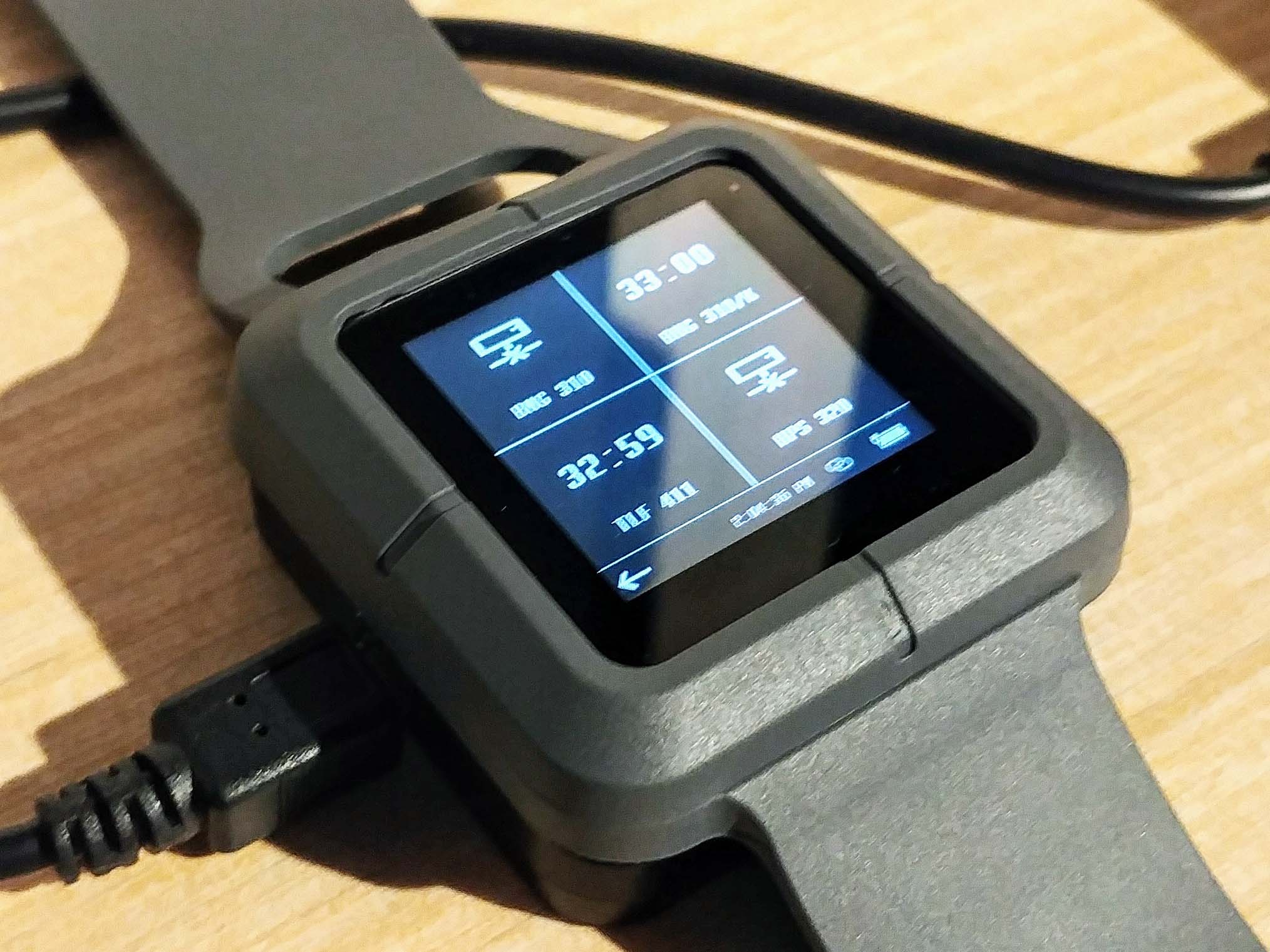TrekStor wearable running Windows 10 IoT Core gets a reveal at Build

The future of some of Microsoft's mobile ambitions is with industrial wearables running Windows 10 IoT Core. An excellent example of that is the TrekStor – a watch-like device meant for business, hospitals, and factory floors.
Announced a few weeks ago the TrekStor is on the floor at Microsoft's Build conference and we got a deep dive on what it can do.
If you took some of the benefits of a smartphone-like connectivity, NFC, camera, sensor, and app support and squeezed it down to an industrial IP67-tested wearable, the TrekStor would be the result.
The idea behind TrekStor, who's hardware is made by the ODM Askey in Taiwan, is to give companies a smartwatch-like experience but powered by Microsoft's Azure cloud services and device management capabilities.
The ability to run secure Universal Windows Platform (UWP) apps and custom interfaces don't hurt either.
The Trekstor can be configured to monitor industrial equipment giving employees a glance-and-go status check on the gear. A hear-rate monitor can be used to ensure employees are wearing the device or even checking on their health. The devices can also be used to communicate with employees by directly messaging them when they're out of sight. The possibilities are endless due to the fact it's running a stripped down version of Windows 10. Imagine the benefits of a smartphone, but on your wrist.

Equipped with microphones and even remote camera management the TrekStor with Windows 10 IoT Core can do live translations with Microsoft Translator, or scan objects. Companies can configure the wearable with a custom UI (since Core does not have one), install apps, lock down services, and more making the device unique for each business and usage scenario.
All the latest news, reviews, and guides for Windows and Xbox diehards.
Battery life varies depending on what features are being used, but 8-12 hours is expected, which typically equals a single shift. The device can be worn on the wrist or around the neck, and it pops into a charger.
Companies are very interested in the instrument because of the security, locked-down nature of the OS, and the natural tie-in into existing Microsoft ecosystems for device management and cloud services.
The TrekStor wearable is in trials now with numerous companies already testing it out. General commercial availability is expected in Q3 of this year. There are no current plans for a consumer version, but Askey is already exploring creating a larger computer-like device that a user wears on their arm, allowing them to have a larger battery and input options.

Daniel Rubino is the Editor-in-chief of Windows Central. He is also the head reviewer, podcast co-host, and analyst. He has been covering Microsoft since 2007 when this site was called WMExperts (and later Windows Phone Central). His interests include Windows, laptops, next-gen computing, and wearable tech. He has reviewed laptops for over 10 years and is particularly fond of 2-in-1 convertibles, Arm64 processors, new form factors, and thin-and-light PCs. Before all this tech stuff, he worked on a Ph.D. in linguistics, performed polysomnographs in NYC, and was a motion-picture operator for 17 years.

